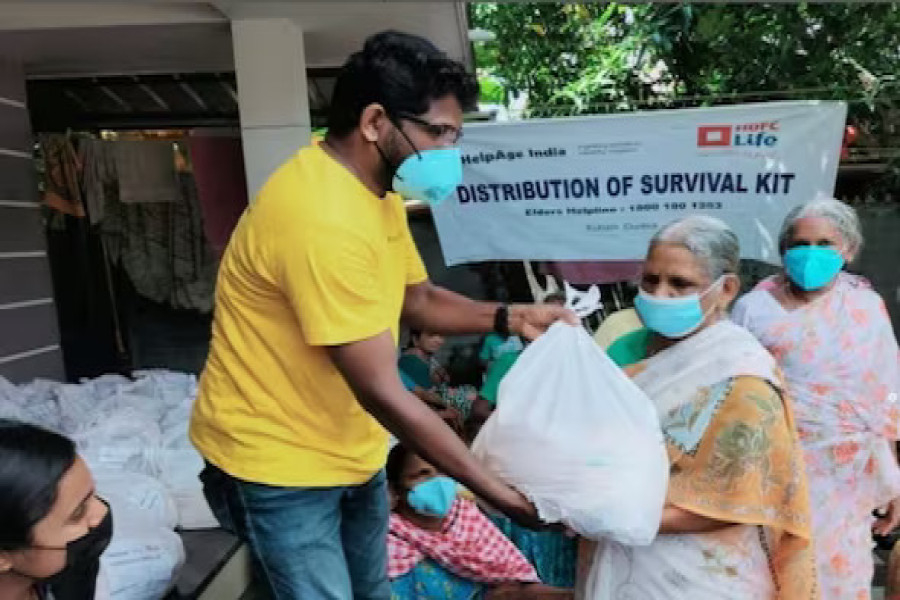"I want to infuse green elections in the minds of people to help protect Earth from climate change and environmental harms," says Dr Heera Lal, who spearheaded the initiative to conduct an 'eco-friendly' election in Punjab's Anandpur Sahib constituency.
New Delhi: As the world grapples with the burning issues of climate change, plastic pollution, and other environmental harms, India has embarked upon a transformative path to organize ‘Green Elections’ which can become a role model for the world powers to embrace and achieve the Net Zero goals.
Green elections are practices that aim to reduce the environmental impact of electoral processes. They involve measures such as using recycled materials, promoting electronic voting, and encouraging candidates to adopt sustainable campaign practices.
During the 2024 general elections, the Anandpur Sahib parliamentary constituency in Punjab successfully created a model of Green Elections in the country. The constituency, located in Rupnagar (formerly Ropar), aimed to turn the Election Commission of India’s slogan of holding 'Green Elections' into reality on the ground.
To neutralize the carbon content generated during the election process, efforts were made to plant the maximum number of trees and ensure the minimum use of plastic during the training, dispatch, and collection of EVMs by polling teams and at counting centers.
New Delhi: As the world grapples with the burning issues of climate change, plastic pollution, and other environmental harms, India has embarked upon a transformative path to organize ‘Green Elections’ which can become a role model for the world powers to embrace and achieve the Net Zero goals.
Green elections are practices that aim to reduce the environmental impact of electoral processes. They involve measures such as using recycled materials, promoting electronic voting, and encouraging candidates to adopt sustainable campaign practices.
During the 2024 general elections, the Anandpur Sahib parliamentary constituency in Punjab successfully created a model of Green Elections in the country. The constituency, located in Rupnagar (formerly Ropar), aimed to turn the Election Commission of India’s slogan of holding 'Green Elections' into reality on the ground.
To neutralize the carbon content generated during the election process, efforts were made to plant the maximum number of trees and ensure the minimum use of plastic during the training, dispatch, and collection of EVMs by polling teams and at counting centers.



The green election efforts involved extensive community engagement. Dr Heera Lal conducted awareness campaigns to educate voters about the importance of eco-friendly practices. (All photos courtesy: drheeralalias.in)
All this was made possible under the leadership of Dr Heera Lal, currently serving as the Special Secretary in the Irrigation and Water Resources Department of Uttar Pradesh, who helped implement a series of green measures to make Anandpur Sahib a model of sustainable elections.
How did Dr Lal, a distinguished 2009-batch IAS officer and General Observer, achieve this feat?
“First and foremost, we instilled the idea of a green election in the hearts and minds of people, as before implementing an idea, it is necessary to instil it in the common public’s mind. If somehow we reduce the production of greenhouse gasses produced during elections, it will not be great for the environment in the long run, which is why we try to convince people to plant trees,” Dr Lal was quoted as saying in media reports.
A hallmark of Dr Lal’s eco-friendly election strategy was the establishment of “Green Booths". These booths were designed to minimize environmental impact by reducing single-use plastics and incorporating sustainable materials. On polling day, voters received saplings as a token of appreciation for their participation, encouraging them to plant these trees and contribute to a greener environment.
Dr Lal also held key meetings with district election officers, police representatives, returning officers, and other officials to outline the green election blueprint. This collaborative effort ensured that all involved parties were committed to the cause. The initiative targeted Anandpur Sahib’s 1.73 million voters across nine assembly constituencies, including Rupnagar, S A S Nagar, S B S Nagar, and Hoshiarpur.
One of the significant aspects of the green election was effective waste management and Dr Lal and his team ensured the importance of segregating waste at polling stations and campaign events. Clear signage and separate collection bins for recyclables, organic waste, and non-recyclables were provided to facilitate proper disposal and recycling. Partnerships with local waste management companies ensured that the collected waste is processed responsibly.
In a bid to reduce carbon emissions, Dr Lal promoted the use of eco-friendly vehicles for transportation during the election period. Encouraging carpooling, public transportation, and the use of renewable energy sources for campaign events were key components of this initiative.
Dr Lal’s green election efforts also involved extensive community engagement. He conducted awareness campaigns to educate voters about the importance of eco-friendly practices. Collaborations with local authorities, NGOs, and community groups played a crucial role in promoting environmental responsibility during the elections.
By mobilizing key stakeholders, including environmental and electoral officers, Dr Lal ensured meticulous planning and execution aligned with the Election Commission of India’s guidelines. This collaborative and grassroots-focused approach has not only enhanced the integrity and sustainability of the election process but also contributed to global sustainability targets, aligning with several Sustainable Development Goals (SDGs).
The success of this initiative demonstrates its potential as a replicable model for future elections worldwide, emphasizing that elections can be a powerful platform for promoting environmental consciousness.
You can explore the full Green Election booklet at https://drheeralalias.in/green-election
The impact of Green ElectionIn the words of IAS officer and former Chief Secretary of Uttar Pradesh Alok Ranjan, the impact of the Green Election initiative was far-reaching. It set a precedent for effective media engagement in spreading awareness and educating the public on eco-friendly practices. The success of this initiative serves as a robust Local model with the potential for Global (Glocal) implementation. It demonstrates that with proactive planning, strong leadership, and community involvement, it is possible to conduct elections that are both environmentally sustainable and democratically robust. Ranjan further said that the Green Election initiative has paved the way for a new era in electoral processes. It stands as a testament to what can be achieved when vision, collaboration, and commitment come together in the service of a greater cause. "Dr Heera Lal's leadership and the collective efforts of his team have not only brought about a successful Green Election but have also set a benchmark for future elections globally," he added. |
Publication Link: https://thesouthasiantimes.info/arts-culture/details/1911/green-elections-india-shows-the-way






























.jpg)